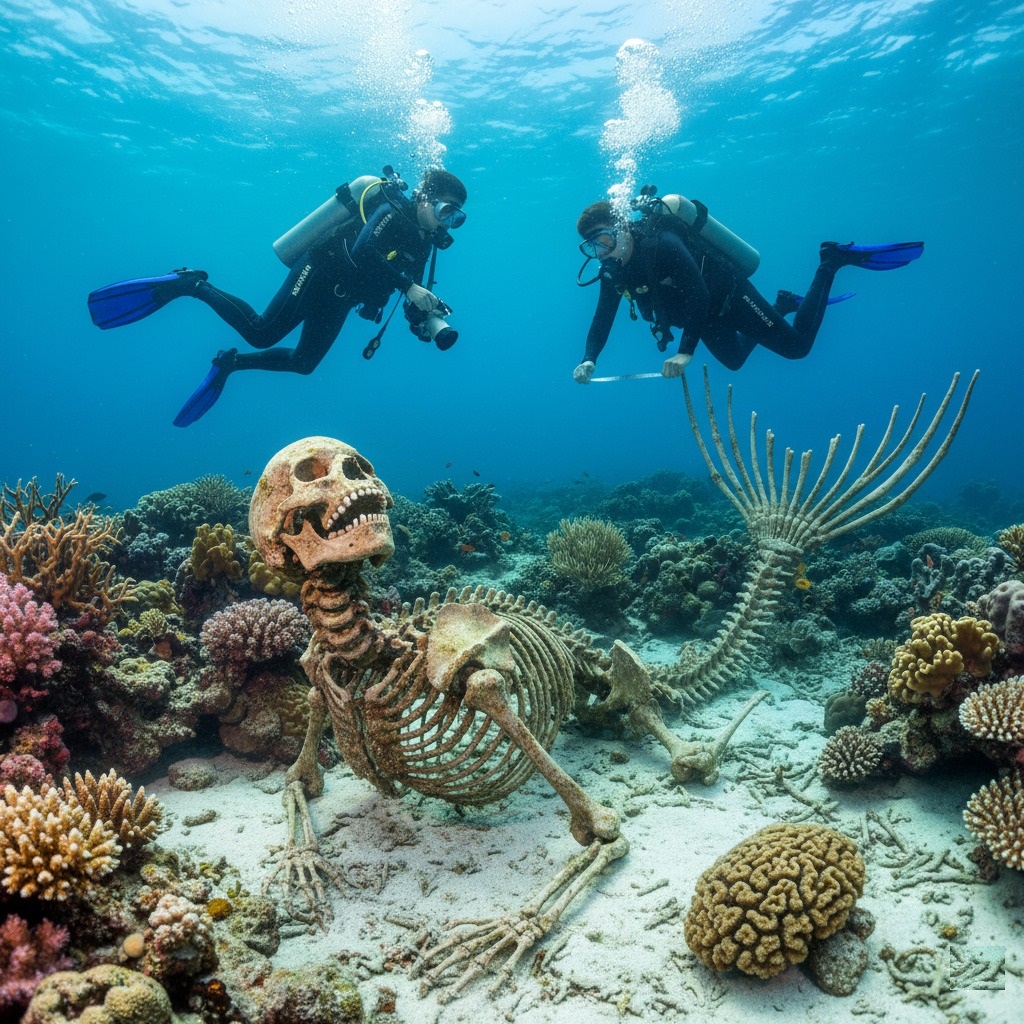The Mariana Trench Siren: Unearthing a Myth

The year was 2042. Dr. Aris Thorne, a deep-sea marine archaeologist, had spent two decades meticulously charting the lesser-known abyssal plains of the Pacific. His latest expedition, funded by the Global Oceanic Discovery Initiative, focused on a particularly enigmatic segment of the Challenger Deep in the Mariana Trench – an area previously thought to be devoid of significant biological or geological curiosities, beyond its crushing pressure.
For weeks, their advanced submersible, The Nautilus III, had been deploying autonomous underwater vehicles (AUVs) to map subtle thermal vents and sediment anomalies. It was one such AUV, Proteus-7, that sent back the first, blurry sonar signature – an impossibly long, articulated structure inconsistent with any known geological formation or marine life. Initial excitement was tempered by the sheer improbability of it.
Finally, after painstaking preparations, Aris and his lead xenobotanist, Dr. Lena Petrova, descended. The journey was a silent, slow ballet of technology against the immense dark. As The Nautilus III’s powerful lights cut through the eternal gloom at a depth of 9,000 meters, the view that slowly resolved itself on the main viewport defied belief.
There, nestled amongst ancient, petrified vent structures and fields of chemosynthetic organisms, lay a colossal skeletal form. It wasn’t just large; it was structured. A distinctly hominid skull, far larger than any human, with prominent cranial ridges, lay tilted as if gazing into the abyss. Its ribcage was vast, protecting what would have been a massive internal cavity. But it was the lower half that truly stunned them. The spine extended into an elegant, tapering caudal peduncle, culminating in broad, calcified fin structures – unmistakably a massive piscine tail.
“My God,” Lena breathed, her voice a hushed whisper over the comms. “It’s… it’s a mermaid.”
Aris, ever the pragmatist, initiated a full spectral scan. The bones were composed of an unknown, extraordinarily dense bio-mineral, infused with trace elements of deep-sea volcanic activity, dating back an estimated 200,000 years. This was no modern hoax, no misplaced fossil from a shallower shelf. This creature had lived and died in the crushing embrace of the deep, long before humans even considered fire.
Over the next few days, a smaller, remotely operated vehicle (ROV) was deployed, carefully excavating the surrounding sediment. They uncovered intricate, barnacle-like growths that had fossilized onto the bones, indicating an incredibly long period of submersion. There were no signs of predation, no obvious trauma. It seemed to have simply laid down and become one with the deep.
The discovery sent shockwaves through the scientific community. It challenged fundamental tenets of evolutionary biology and anthropology. The legend of the siren, the mermaid, once dismissed as mere folklore, now had a haunting, ancient skeleton in the deepest ocean to attest to its possibility. The Mariana Trench, once seen as a barren frontier, had yielded its most profound secret – a glimpse into a time when the myths might have swum in silent, sunless waters, waiting to be ununearthed by the curious eyes of a future world.
